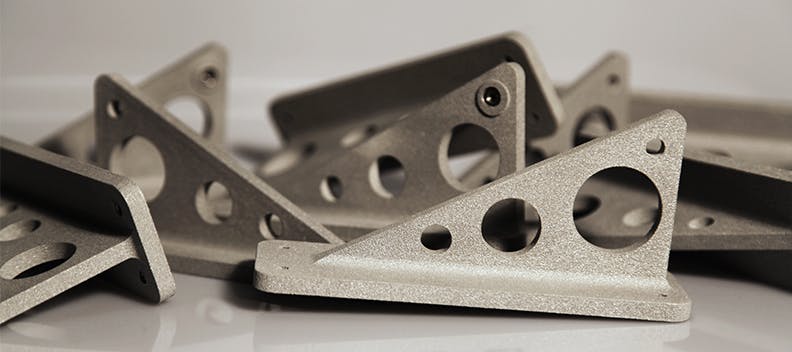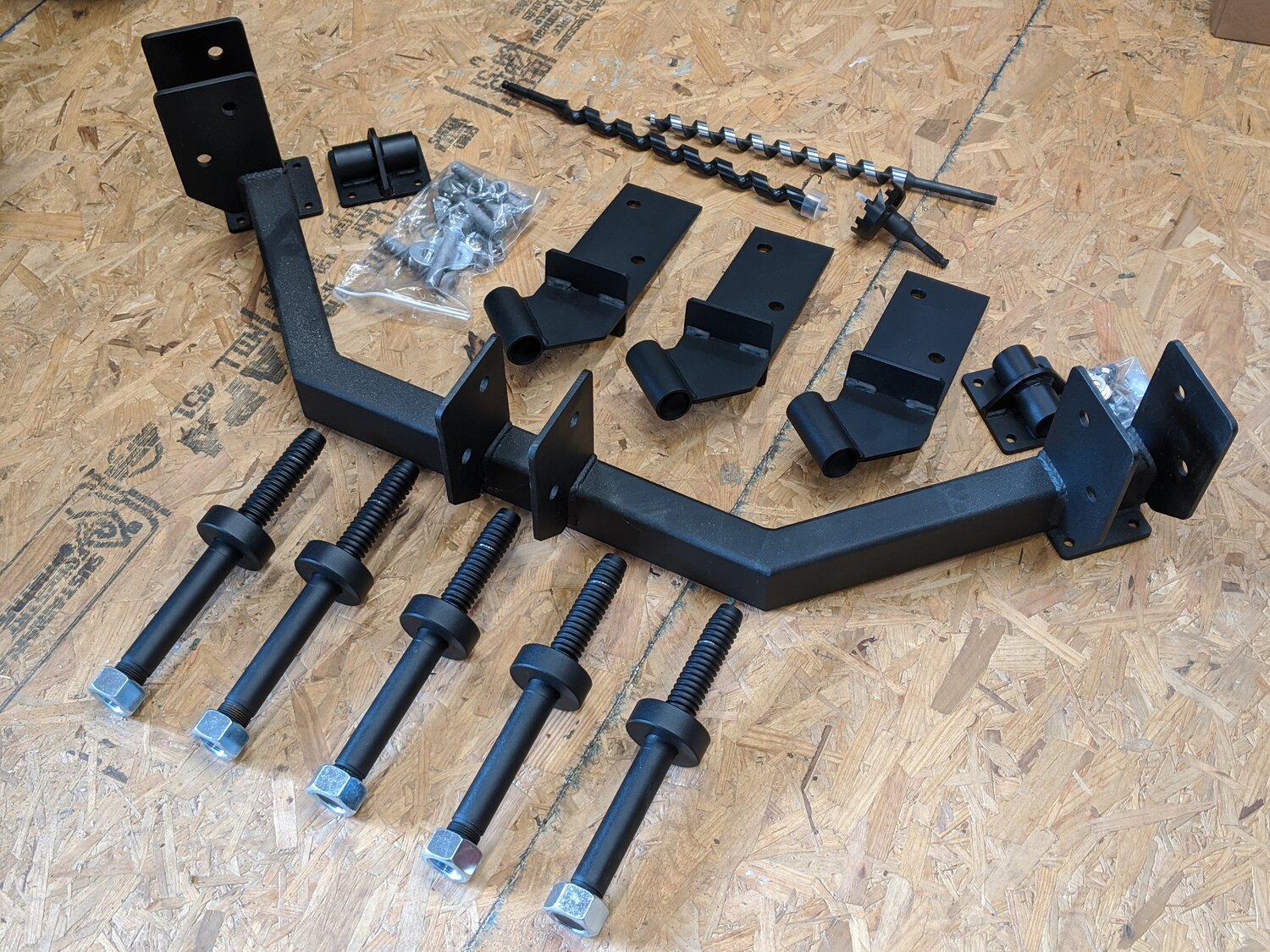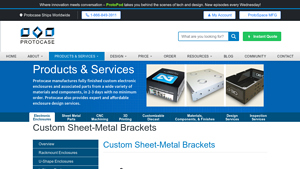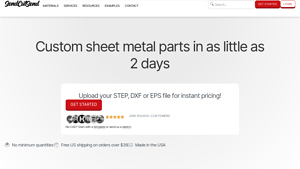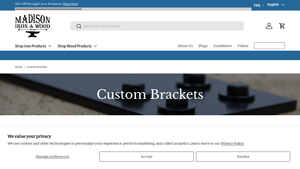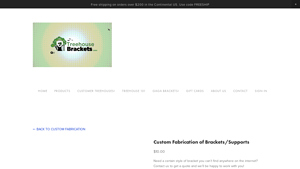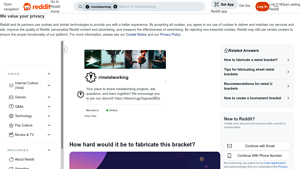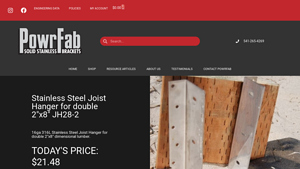Introduction: Navigating the Global Market for custom bracket fabrication
In today’s fast-paced global market, sourcing custom bracket fabrication can present a daunting challenge for international B2B buyers. Whether you are in Africa, South America, the Middle East, or Europe, the pressure to find reliable suppliers who can deliver high-quality, tailored solutions on time is immense. This guide aims to demystify the complexities of custom bracket fabrication, providing insights into various types of brackets, their applications across different industries, and the critical factors to consider when selecting a supplier.
We will delve into essential aspects such as material options, manufacturing processes, and finishing techniques, as well as practical advice on how to vet suppliers effectively. Additionally, we will explore cost considerations to help you budget accurately for your projects. By equipping you with this knowledge, we empower you to make informed purchasing decisions that align with your operational needs and quality standards.
This comprehensive resource is designed specifically for B2B buyers seeking to enhance their procurement strategies in the custom bracket fabrication space. With actionable insights tailored for regions including Brazil and Saudi Arabia, you can navigate this global market with confidence, ensuring that your projects are not only successful but also cost-effective. Let’s embark on this journey to streamline your sourcing process and elevate your project outcomes.
Understanding custom bracket fabrication Types and Variations
| Type Name | Key Distinguishing Features | Primary B2B Applications | Brief Pros & Cons for Buyers |
|---|---|---|---|
| L-Bracket | Simple right-angle design, versatile for mounting | Electronics, furniture assembly | Pros: Easy installation; Cons: Limited load capacity. |
| U-Bracket | U-shaped design for mounting parallel surfaces | HVAC systems, shelving | Pros: Provides stability; Cons: Requires precise measurements. |
| Z-Bracket | Features two bends forming a Z shape | Signage, display fixtures | Pros: Ideal for offset applications; Cons: More complex to fabricate. |
| Gusset Bracket | Triangular shape, enhances structural integrity | Construction, automotive | Pros: Increases strength; Cons: May require additional space. |
| Offset Bracket | Designed for mounting components within enclosures | Electronics, machinery | Pros: Optimizes space usage; Cons: Design complexity can increase costs. |
What Are the Characteristics of L-Brackets and Their Applications?
L-brackets are characterized by their straightforward right-angle shape, making them ideal for mounting one surface to another, such as attaching a shelf to a wall or securing components within electronic enclosures. They are commonly used in various industries, including electronics and furniture assembly, due to their ease of installation. However, buyers should consider their limited load capacity, which may not be suitable for heavier applications.
How Do U-Brackets Function and Where Are They Used?
U-brackets are formed into a U shape, allowing them to effectively mount parallel surfaces together, such as in HVAC systems or shelving units. Their design provides enhanced stability, making them a reliable choice for applications requiring secure connections. However, precise measurements are essential when ordering U-brackets, as inaccuracies can lead to installation issues or structural weaknesses.
What Sets Z-Brackets Apart for Specific Uses?
Z-brackets are distinguished by their unique two-bend design, creating a Z shape that is perfect for mounting offset parallel surfaces. They are particularly useful in signage and display fixtures where alignment and positioning are crucial. While they offer flexibility in applications, the complexity of their fabrication can lead to higher costs, which buyers should factor into their budget.
Why Are Gusset Brackets Important for Structural Integrity?
Gusset brackets, shaped like triangles, are designed to provide additional strength and stability between adjacent surfaces. They are commonly used in construction and automotive applications where structural integrity is paramount. While they significantly enhance strength, buyers need to consider that gusset brackets may require more space than other designs, potentially impacting overall layout and design.
What Advantages Do Offset Brackets Offer in Custom Fabrication?
Offset brackets are specifically designed to mount components within enclosures, optimizing space usage in compact designs. They are frequently utilized in electronics and machinery applications where efficient use of space is critical. However, the complexity of their design can lead to increased costs, making it essential for buyers to assess their project requirements and budget accordingly.
Key Industrial Applications of custom bracket fabrication
| Industry/Sector | Specific Application of Custom Bracket Fabrication | Value/Benefit for the Business | Key Sourcing Considerations for this Application |
|---|---|---|---|
| Electronics Manufacturing | Mounting of circuit boards and components | Ensures structural integrity and optimal component placement | Precision in fabrication, rapid turnaround, and material compliance |
| Automotive Industry | Support brackets for engine components | Enhances performance and safety of vehicle systems | Customization options, durability of materials, and regulatory compliance |
| Construction and Architecture | Structural support for building frameworks | Provides stability and safety in construction projects | Material selection, load-bearing capacity, and aesthetic finishes |
| Food Processing | Brackets for equipment mounting | Facilitates efficient workflow and hygiene in production | Compliance with health standards, ease of cleaning, and corrosion resistance |
| Renewable Energy | Mounting systems for solar panels | Optimizes energy capture and system longevity | Environmental durability, weight considerations, and installation ease |
How is Custom Bracket Fabrication Used in Electronics Manufacturing?
In the electronics manufacturing sector, custom brackets are essential for securely mounting circuit boards and other components within enclosures. These brackets ensure that components remain stable during operation, preventing damage from vibrations or shocks. Buyers in this sector often require precision fabrication to meet specific design parameters, rapid turnaround times to keep production schedules on track, and compliance with material standards such as RoHS. International buyers, especially from regions like Europe and the Middle East, may also focus on suppliers who can provide custom solutions without minimum order constraints.
What Role Does Custom Bracket Fabrication Play in the Automotive Industry?
The automotive industry utilizes custom brackets to support various engine components, enhancing both performance and safety. These brackets must withstand high stress and harsh environmental conditions, necessitating the use of durable materials like stainless steel or aluminum. When sourcing, automotive manufacturers should prioritize suppliers who offer customization capabilities, quick lead times, and adherence to industry regulations. For buyers in emerging markets such as Brazil and South Africa, finding local suppliers who can meet these needs can significantly reduce shipping costs and lead times.
How Are Custom Brackets Used in Construction and Architecture?
In construction and architecture, custom brackets provide vital structural support for frameworks and installations. These brackets are designed to bear significant loads, ensuring the stability and safety of buildings. Buyers in this sector need to consider factors such as material selection for durability and aesthetic appeal, especially for visible installations. International buyers, particularly from regions with stringent building codes, should seek manufacturers who can demonstrate compliance with local regulations and provide detailed load testing data.
Why Are Custom Brackets Important in Food Processing?
Custom brackets are critical in the food processing industry for mounting equipment and ensuring a clean, efficient workflow. They help maintain hygiene standards by facilitating easy cleaning and preventing contamination. Buyers must consider compliance with health regulations, such as FDA standards, and select materials that resist corrosion and are easy to sanitize. For international buyers, particularly in developing regions, sourcing from manufacturers who understand local health regulations can streamline the compliance process and enhance operational efficiency.
How Do Custom Brackets Support Renewable Energy Applications?
In the renewable energy sector, particularly in solar energy installations, custom brackets are used to mount solar panels securely. These brackets ensure optimal positioning for maximum energy capture while withstanding environmental factors like wind and rain. Buyers should focus on sourcing brackets that are lightweight yet robust, as well as resistant to corrosion. International buyers, especially in regions with varying climates, should look for manufacturers who can provide solutions tailored to local environmental conditions and installation practices.
3 Common User Pain Points for ‘custom bracket fabrication’ & Their Solutions
Scenario 1: Tight Deadlines for Project Completion
The Problem: In the fast-paced world of manufacturing and construction, deadlines are often non-negotiable. A B2B buyer may find themselves in a situation where they need custom brackets fabricated quickly to meet a project deadline. Delays in sourcing materials or manufacturing can lead to significant project delays, increased costs, and potential loss of business opportunities. This is particularly challenging for companies that operate on tight timelines and cannot afford to wait weeks for essential components.
The Solution: To address tight deadlines, it’s crucial to partner with a custom bracket fabrication supplier that offers rapid turnaround times. Look for manufacturers who provide expedited services, ideally promising delivery in as little as 2-3 days. When placing an order, ensure you provide detailed specifications, including dimensions, material types, and any required finishes. Utilizing CAD software can streamline this process, allowing for precise designs that reduce the risk of errors. Additionally, consider suppliers that have in-house capabilities for cutting, drilling, and polishing, as this can significantly shorten lead times. Establishing a relationship with a reliable supplier who understands your urgency can make all the difference in meeting project deadlines effectively.
Scenario 2: Quality Assurance and Specification Challenges
The Problem: Quality assurance is paramount when sourcing custom brackets, as any deficiencies can compromise the entire project. B2B buyers may struggle with ensuring that the fabricated brackets meet their exact specifications, leading to concerns about structural integrity and performance. This is especially true in industries like construction and automotive, where the failure of components can have serious safety implications.
The Solution: To mitigate quality concerns, it is essential to conduct thorough research on potential fabrication partners. Request samples of previous work to assess their craftsmanship and adherence to specifications. Implementing a rigorous quality control process, including detailed specifications for materials and finishes, will further help ensure that the final product meets your standards. Engaging in open communication with the supplier throughout the design and manufacturing process allows for adjustments and ensures alignment with your quality expectations. Finally, consider suppliers who offer post-manufacturing inspection services, as these can provide an additional layer of confidence that the brackets will perform as intended.
Scenario 3: Cost Management and Budget Constraints
The Problem: B2B buyers often face budget constraints that complicate the procurement of custom components like brackets. The challenge lies in balancing the need for high-quality materials and fabrication services with the realities of cost management. Overestimating or underestimating the budget for custom bracket fabrication can lead to financial strain, affecting project viability and overall profitability.
The Solution: To navigate budget constraints effectively, begin by clearly defining the project requirements and budget limits before approaching suppliers. Request detailed quotes that break down costs for materials, labor, and any additional services. This transparency will help you identify areas where you can cut costs without compromising quality. Additionally, consider bulk ordering if you anticipate needing multiple brackets for future projects, as many suppliers offer discounts for larger quantities. Leverage competitive bidding by reaching out to multiple suppliers to compare prices and services, ensuring you get the best value. Lastly, look for suppliers that provide a range of materials and finishes, allowing you to adjust specifications based on your budget while still achieving the desired functionality.
Strategic Material Selection Guide for custom bracket fabrication
What Are the Key Properties of Common Materials Used in Custom Bracket Fabrication?
When selecting materials for custom bracket fabrication, it’s essential to consider the specific properties that influence performance and durability. Here, we analyze four commonly used materials: Aluminum, Stainless Steel, Cold Rolled Steel, and Brass.
Aluminum: A Lightweight and Versatile Option
Aluminum is favored for its lightweight nature and excellent corrosion resistance, making it ideal for applications where weight savings are crucial, such as in the aerospace and automotive industries. Its ability to withstand moderate temperatures and pressures adds to its versatility.
Pros: Aluminum brackets are easy to fabricate, allowing for complex designs with lower manufacturing costs. They are also non-magnetic and can be anodized for additional surface protection.
Cons: However, aluminum has a lower tensile strength compared to steel, which may limit its use in high-stress applications. Additionally, it can be more expensive than other metals, depending on the alloy.
Impact on Application: Aluminum is suitable for environments where corrosion is a concern, such as coastal areas or industries dealing with moisture.
Considerations for International Buyers: Buyers from regions like Brazil and Saudi Arabia should ensure compliance with international standards such as ASTM B221 for aluminum extrusions and consider local sourcing to reduce costs.
Stainless Steel: Strength and Corrosion Resistance
Stainless steel is renowned for its strength and resistance to corrosion, making it a popular choice for heavy-duty applications, including construction and food processing. It can withstand high temperatures and pressures, which is crucial in industrial settings.
Pros: The durability of stainless steel translates to a longer lifespan for brackets, reducing replacement costs. It also maintains its aesthetic appeal, as it can be polished to a mirror finish.
Cons: The primary drawback is its higher cost compared to other materials, which may not be justifiable for low-budget projects. Additionally, it can be more challenging to machine, leading to increased fabrication times.
Impact on Application: Stainless steel is compatible with various media, including harsh chemicals, making it suitable for industries like pharmaceuticals and food processing.
Considerations for International Buyers: Compliance with standards such as ASTM A240 for stainless steel is critical, especially in regions like Europe, where regulations on food safety are stringent.
Cold Rolled Steel: Cost-Effective and Strong
Cold rolled steel is a cost-effective option that offers high strength and durability, making it suitable for structural applications. It has good machinability and can be finished in various ways, including painting or powder coating.
Pros: Its low cost and high strength make it an attractive option for bulk orders. Cold rolled steel is also readily available, which can reduce lead times.
Cons: However, it is prone to rust and corrosion if not properly coated, limiting its use in outdoor or humid environments. It also has a lower resistance to high temperatures compared to stainless steel.
Impact on Application: Cold rolled steel is often used in automotive and industrial applications, where strength is prioritized over corrosion resistance.
Considerations for International Buyers: Buyers should be aware of compliance with standards like ASTM A1008 for cold rolled steel, especially in regions with specific construction regulations.
Brass: A Unique Choice with Aesthetic Appeal
Brass is an alloy of copper and zinc, known for its excellent machinability and corrosion resistance. It is often used in decorative applications due to its attractive appearance.
Pros: Brass brackets can provide a unique aesthetic appeal, making them suitable for architectural applications. They also offer good resistance to corrosion and wear.
Cons: The primary limitation is its lower strength compared to steel, making it unsuitable for heavy-duty applications. It can also be more expensive than other metals.
Impact on Application: Brass is often used in decorative hardware and plumbing applications, where both aesthetics and corrosion resistance are important.
Considerations for International Buyers: Compliance with standards such as ASTM B36 for brass is essential, particularly in regions with strict building codes.
Summary Table of Material Selection for Custom Bracket Fabrication
| Material | Typical Use Case for custom bracket fabrication | Key Advantage | Key Disadvantage/Limitation | Relative Cost (Low/Med/High) |
|---|---|---|---|---|
| Aluminum | Aerospace, automotive, electronics | Lightweight and corrosion-resistant | Lower tensile strength compared to steel | Medium |
| Stainless Steel | Food processing, construction, industrial | High strength and excellent corrosion resistance | Higher cost and difficult to machine | High |
| Cold Rolled Steel | Automotive, industrial applications | Cost-effective and strong | Prone to rust without coating | Low |
| Brass | Decorative hardware, plumbing | Aesthetic appeal and good corrosion resistance | Lower strength and higher cost | Medium |
This strategic material selection guide equips international B2B buyers with the insights needed to make informed decisions in custom bracket fabrication, ensuring that their choices align with both performance requirements and regional compliance standards.
In-depth Look: Manufacturing Processes and Quality Assurance for custom bracket fabrication
What Are the Key Stages in the Custom Bracket Manufacturing Process?
The manufacturing process for custom brackets involves several crucial stages, each of which is essential to ensure the final product meets the required specifications. Understanding these stages helps B2B buyers make informed decisions when selecting suppliers.
Material Preparation: What Materials Are Commonly Used?
The first step in custom bracket fabrication is material preparation. Brackets can be manufactured from a variety of metals, including aluminum, stainless steel, cold-rolled steel, and brass. The choice of material often depends on the application requirements, such as load-bearing capacity, environmental resistance, and aesthetic considerations.
In this stage, raw materials are sourced from reputable suppliers, ensuring they meet specific quality standards. Buyers should inquire about the origin of materials and any certifications that confirm their quality, such as ASTM (American Society for Testing and Materials) standards.
How Are Brackets Formed During Manufacturing?
After preparing the materials, the next step is forming. This involves various techniques such as shearing, bending, and punching to shape the raw material into the desired bracket configuration. Common techniques include:
- CNC Machining: This precision technique uses computer-controlled machines to create intricate designs with high accuracy. It is particularly beneficial for complex bracket shapes.
- Laser Cutting: Ideal for producing detailed patterns and complex geometries, laser cutting minimizes waste and enhances precision.
- Hydraulic Pressing: This method is used to bend and form metal sheets into the required angles and shapes.
Each of these techniques can significantly influence the strength and durability of the finished bracket. B2B buyers should assess whether the manufacturer employs advanced technologies that can enhance product quality.
What Role Does Assembly Play in Custom Bracket Fabrication?
In some cases, brackets may require assembly, especially if they consist of multiple components. This stage involves joining parts through welding, riveting, or using fasteners. The assembly process must be executed with precision to ensure the structural integrity of the brackets.
When selecting a supplier, B2B buyers should inquire about their assembly capabilities and whether they have specific assembly techniques that suit their project needs. This is particularly important for custom designs that may require unique assembly methods.
Why Is Finishing Important in Custom Bracket Manufacturing?
Finishing is the final stage of the manufacturing process and is crucial for both aesthetics and functionality. It may involve:
- Powder Coating: Provides a durable and attractive finish while offering corrosion resistance.
- Anodizing: Particularly for aluminum brackets, this process enhances corrosion resistance and allows for color customization.
- Surface Treatments: Techniques like passivation and media blasting improve the surface quality and longevity of the brackets.
Finishing not only enhances the visual appeal of the brackets but also ensures their performance in various environments. B2B buyers should request information about the finishing options available and any certifications related to environmental compliance.
What Quality Control Measures Are Essential in Custom Bracket Fabrication?
Quality control (QC) is critical in ensuring that custom brackets meet the required specifications and standards. Effective QC processes are essential for minimizing defects and ensuring customer satisfaction.
Which International Standards Should B2B Buyers Be Aware Of?
B2B buyers should look for suppliers that adhere to international quality standards such as ISO 9001, which outlines criteria for a quality management system. Additionally, industry-specific certifications like CE marking (for products sold in the European Economic Area) and API (American Petroleum Institute) standards for oil and gas applications are important indicators of quality.
What Are the Key QC Checkpoints in the Manufacturing Process?
Quality control checkpoints should be integrated at various stages of the manufacturing process:
- Incoming Quality Control (IQC): This involves inspecting raw materials upon arrival to ensure they meet specified standards.
- In-Process Quality Control (IPQC): Ongoing inspections during production help identify and rectify defects early in the process.
- Final Quality Control (FQC): This final inspection ensures that the finished brackets meet all specifications before shipping.
B2B buyers should ask potential suppliers about their QC processes and how they monitor compliance with quality standards.
How Can B2B Buyers Verify Supplier Quality Assurance Practices?
To ensure that suppliers maintain rigorous quality assurance practices, B2B buyers can take several steps:
- Audits: Conducting site visits and audits can provide insights into a supplier’s manufacturing practices and adherence to quality standards.
- Quality Reports: Requesting detailed quality reports and certifications can help buyers assess a supplier’s commitment to quality.
- Third-Party Inspections: Engaging independent third-party inspection services can provide an objective evaluation of the supplier’s quality control measures.
What Are the Quality Control Nuances for International B2B Buyers?
International buyers, particularly from regions like Africa, South America, the Middle East, and Europe, should be aware of specific nuances related to quality control:
- Cultural and Regulatory Differences: Different countries may have varying standards and regulations regarding manufacturing and quality assurance. Familiarity with these differences can help avoid compliance issues.
- Logistics and Supply Chain Challenges: Understanding the logistics involved in international shipping can affect lead times and product quality during transit. Buyers should discuss packaging and handling procedures with suppliers to mitigate risks.
- Communication Barriers: Clear communication is vital for ensuring that specifications are understood and met. Establishing strong communication channels can help bridge potential gaps.
By understanding the manufacturing processes and quality assurance measures involved in custom bracket fabrication, B2B buyers can make informed decisions that align with their project requirements and quality expectations. This knowledge is essential for fostering successful partnerships with suppliers in the global market.
Practical Sourcing Guide: A Step-by-Step Checklist for ‘custom bracket fabrication’
Introduction
When sourcing custom bracket fabrication, it’s essential to approach the process methodically to ensure quality, cost-effectiveness, and timely delivery. This step-by-step checklist will guide international B2B buyers through the crucial stages of procurement, helping them make informed decisions that align with their project requirements.
Step 1: Define Your Technical Specifications
Establishing clear technical specifications is the foundation of successful custom bracket fabrication. Outline the dimensions, load-bearing requirements, material preferences, and any specific design features. This clarity not only aids in accurate quotes from suppliers but also reduces the likelihood of errors during manufacturing.
- Material Selection: Consider factors like corrosion resistance and weight. Common materials include stainless steel, aluminum, and brass.
- Design Complexity: Provide CAD files or sketches to convey your vision effectively.
Step 2: Research Potential Suppliers
Conduct thorough research to identify potential suppliers that specialize in custom bracket fabrication. Utilize industry directories, trade shows, and online reviews to compile a list of candidates. This step is critical to ensure that the suppliers possess the necessary expertise and capabilities to meet your requirements.
- Supplier Credentials: Look for certifications such as ISO 9001 to ensure quality management practices.
- Industry Experience: Prioritize suppliers with a track record in your specific industry to benefit from their tailored knowledge.
Step 3: Evaluate Supplier Capabilities
Before committing, it’s crucial to vet suppliers thoroughly. Request company profiles, case studies, and references from buyers in a similar industry or region. Assess their manufacturing processes, technology, and production capacity to ensure they can handle your order’s complexity and volume.
- Technology Utilization: Check if they employ advanced fabrication techniques like CNC machining and 3D printing.
- Quality Control Measures: Inquire about their inspection processes and quality assurance practices.
Step 4: Request Quotes and Samples
Once you’ve narrowed down your options, request detailed quotes and, if possible, samples of previous work. This will give you a clearer picture of pricing structures, lead times, and the quality of materials used. Comparing quotes side-by-side will help you identify the best value without compromising on quality.
- Transparent Pricing: Ensure the quote includes all potential costs, such as shipping and handling.
- Sample Evaluation: Assess the quality of samples to gauge the supplier’s craftsmanship.
Step 5: Verify Lead Times and Flexibility
Understanding the supplier’s lead times is crucial for project planning. Inquire about their typical turnaround times and their ability to accommodate rush orders if necessary. A supplier’s flexibility can be a significant advantage, especially in dynamic project environments.
- Production Schedules: Discuss how they manage their production workflow to meet deadlines.
- Crisis Management: Ask how they handle unexpected delays or changes in order specifications.
Step 6: Establish Clear Communication Channels
Effective communication is vital throughout the sourcing process. Establish points of contact and preferred communication methods to streamline discussions. Clear communication minimizes misunderstandings and ensures that both parties are aligned on project expectations.
- Regular Updates: Schedule periodic check-ins to stay informed about the project’s progress.
- Feedback Mechanism: Set up a system for providing and receiving feedback to facilitate continuous improvement.
Step 7: Finalize Contracts and Agreements
Once you’ve selected a supplier, ensure that all terms, including pricing, timelines, and quality expectations, are documented in a formal contract. This step protects both parties and sets clear expectations, reducing the risk of disputes later on.
- Contract Clarity: Include detailed descriptions of deliverables and timelines.
- Payment Terms: Specify payment schedules to avoid confusion.
Following this checklist will help you navigate the complexities of sourcing custom bracket fabrication effectively, ensuring that your projects are completed on time and within budget.
Comprehensive Cost and Pricing Analysis for custom bracket fabrication Sourcing
What Are the Key Cost Components in Custom Bracket Fabrication?
Understanding the cost structure of custom bracket fabrication is essential for B2B buyers seeking to optimize their purchasing strategies. The primary cost components include:
-
Materials: The choice of materials, such as aluminum, stainless steel, or brass, significantly influences pricing. Higher-quality metals or specialized finishes (e.g., anodizing, powder coating) can increase costs.
-
Labor: Labor costs encompass the wages of skilled workers engaged in the fabrication process. Complex designs or low-volume orders may require more labor time, impacting overall expenses.
-
Manufacturing Overhead: This includes indirect costs such as utilities, rent, and equipment maintenance. Efficient operations can help minimize overhead, leading to competitive pricing.
-
Tooling: Custom tooling may be necessary for specific designs. Tooling costs can be amortized over larger production runs, reducing the per-unit cost for high-volume orders.
-
Quality Control (QC): Ensuring that products meet specifications requires investments in QC processes. Certifications and compliance with industry standards can add to costs but are crucial for ensuring product reliability.
-
Logistics: Shipping costs can vary based on distance, shipping method, and volume. International shipments may involve customs duties and tariffs, influencing the total cost.
-
Margin: Suppliers typically add a profit margin on top of their costs. This margin can vary based on the supplier’s market positioning and service level.
How Do Price Influencers Impact Custom Bracket Fabrication Costs?
Several factors influence the pricing of custom brackets, particularly for international buyers:
-
Volume and Minimum Order Quantity (MOQ): Higher order volumes often lead to better pricing due to economies of scale. Suppliers may offer discounts for bulk purchases, while low-volume orders might incur higher per-unit costs.
-
Specifications and Customization: Unique designs or specific tolerances can increase costs. Buyers should clearly communicate their needs to avoid misunderstandings that could lead to unexpected expenses.
-
Materials: The choice of raw materials impacts both cost and performance. For instance, stainless steel may be more expensive than aluminum but offers greater durability in specific applications.
-
Quality and Certifications: Products that require certifications (e.g., ISO, RoHS) may cost more due to additional testing and compliance processes. Buyers should assess the necessity of these certifications based on their application.
-
Supplier Factors: The supplier’s reputation, experience, and location can affect pricing. Established suppliers may charge more due to their expertise and reliability.
-
Incoterms: Understanding Incoterms is critical for international transactions. They define responsibilities regarding shipping, insurance, and tariffs, which can significantly affect the final cost.
What Are Effective Buyer Tips for Negotiating Custom Bracket Prices?
B2B buyers can adopt several strategies to enhance cost-efficiency in their custom bracket sourcing:
-
Negotiate Volume Discounts: Engage suppliers in discussions about bulk purchasing to secure better pricing. Presenting future order commitments can also incentivize suppliers to offer discounts.
-
Evaluate Total Cost of Ownership (TCO): Consider not just the purchase price but also long-term costs such as maintenance, durability, and potential failure rates. Investing in higher-quality brackets may yield savings over time.
-
Research Multiple Suppliers: Obtain quotes from various suppliers to compare prices, lead times, and service levels. This can provide leverage in negotiations and help identify the best overall value.
-
Clarify Specifications Early: Provide detailed specifications and expectations upfront to minimize revisions and associated costs. This clarity helps suppliers provide accurate quotes and reduces the risk of costly errors.
-
Understand Pricing Nuances for International Transactions: Be aware of currency fluctuations, import duties, and shipping costs when sourcing from different regions. This understanding can prevent budget overruns.
Disclaimer on Indicative Prices
Pricing for custom bracket fabrication can vary widely based on the factors discussed above. The information provided serves as a guideline; actual costs may differ based on specific requirements, supplier capabilities, and market conditions. It is advisable to obtain tailored quotes from suppliers to ensure accurate budgeting and planning.
Alternatives Analysis: Comparing custom bracket fabrication With Other Solutions
When considering the best solutions for mounting and supporting components, custom bracket fabrication is one option among several. This section explores viable alternatives, allowing international B2B buyers to make informed decisions based on their specific requirements.
| Comparison Aspect | Custom Bracket Fabrication | 3D Printing | Off-the-Shelf Brackets |
|---|---|---|---|
| Performance | High durability; tailored to exact specifications | Good for prototyping; limited in load-bearing | Standardized; may not fit all applications |
| Cost | Variable; often higher for one-off designs | Generally lower for prototypes; costs rise for production | Lower cost; bulk pricing available |
| Ease of Implementation | Requires detailed designs; may involve longer lead times | Quick setup for prototypes; longer for production runs | Immediate availability; minimal setup required |
| Maintenance | Durable; minimal maintenance needed | May require careful handling | Varies based on material and usage |
| Best Use Case | Complex, unique applications needing exact specs | Prototyping and low-volume production | Common applications with standard requirements |
What Are the Advantages and Disadvantages of 3D Printing as an Alternative?
3D printing offers a unique approach to creating brackets, especially suitable for rapid prototyping. The primary advantage of this technology is its ability to produce complex shapes without the need for extensive tooling, making it ideal for low-volume production runs. However, while 3D-printed brackets can be cost-effective for prototypes, they often lack the structural integrity required for heavy-duty applications. Consequently, they may not be suitable for environments requiring robust support.
How Do Off-the-Shelf Brackets Compare in Terms of Convenience and Cost?
Off-the-shelf brackets are a popular choice due to their convenience and cost-effectiveness. They are readily available and come in various standard sizes and shapes, which simplifies the purchasing process. The main drawback is that they may not meet specific application needs, leading to potential compromises in performance or aesthetics. For projects with standard requirements, off-the-shelf solutions can save time and reduce expenses, but they may not provide the same tailored fit as custom fabrication.
Conclusion: How Should B2B Buyers Choose the Right Solution?
B2B buyers should carefully evaluate their specific requirements when selecting a solution for mounting and supporting components. Custom bracket fabrication is ideal for unique applications requiring precise specifications and durability. In contrast, 3D printing is excellent for rapid prototyping, while off-the-shelf brackets offer convenience and lower costs for standard needs. By considering performance, cost, ease of implementation, and maintenance, buyers can select the best option that aligns with their project goals and operational needs.
Essential Technical Properties and Trade Terminology for custom bracket fabrication
What Are the Key Technical Properties in Custom Bracket Fabrication?
1. Material Grade
The selection of material grade is crucial in custom bracket fabrication. Common materials include cold-rolled steel, stainless steel, aluminum, and brass. Each material has unique properties such as strength, corrosion resistance, and weight. For example, stainless steel is favored for its durability and resistance to rust, making it ideal for outdoor or high-humidity applications. Understanding the material specifications helps B2B buyers choose the right bracket for their specific environmental and load-bearing needs.
2. Tolerance
Tolerance refers to the allowable variation in dimensions during the manufacturing process. It is critical for ensuring that brackets fit precisely within their intended applications, especially in assembly lines or machinery where misalignment can lead to operational failures. Tight tolerances are essential in high-precision industries, while looser tolerances may suffice in less critical applications. Knowledge of tolerance levels helps buyers assess the manufacturing capability of their suppliers and ensure compatibility with their project requirements.
3. Finish Type
The finish type applied to custom brackets can significantly affect their performance and aesthetics. Finishes such as powder coating, anodizing, or passivation enhance corrosion resistance and can improve appearance. A well-chosen finish not only extends the life of the bracket but also aligns with branding and design specifications. B2B buyers should consider the operational environment and visual requirements when selecting finishes to ensure longevity and compliance with industry standards.
4. Load Capacity
Load capacity indicates the maximum weight a bracket can support without failure. This specification is vital for applications ranging from construction to automotive industries. Understanding load capacities ensures that brackets are adequately designed for their intended use, preventing structural failures that could lead to costly downtime or safety hazards. Buyers should communicate their load requirements clearly to manufacturers for optimal bracket performance.
5. Customization Options
Customization options encompass various aspects, including size, shape, and the inclusion of features like fasteners or specific drilling patterns. The ability to tailor brackets to specific applications is a significant advantage in custom fabrication. It allows companies to optimize their designs for efficiency and functionality. Buyers should seek manufacturers that offer flexible customization capabilities to meet unique project demands.
What Are the Common Trade Terms in Custom Bracket Fabrication?
1. OEM (Original Equipment Manufacturer)
OEM refers to a company that produces parts or equipment that may be marketed by another manufacturer. In the context of custom bracket fabrication, buyers may work with OEMs to source specific components that fit their proprietary systems. Understanding OEM relationships helps buyers navigate supply chains and establish reliable partnerships.
2. MOQ (Minimum Order Quantity)
MOQ is the smallest amount of a product that a supplier is willing to sell. In custom bracket fabrication, MOQs can vary significantly between suppliers. Buyers should inquire about MOQs early in the negotiation process to ensure that their project scales align with supplier capabilities, avoiding excess inventory or increased costs.
3. RFQ (Request for Quotation)
An RFQ is a formal document sent to suppliers to solicit pricing and terms for specific products or services. In the context of custom bracket fabrication, submitting an RFQ allows buyers to receive detailed quotes based on their specifications. This process is essential for comparing potential suppliers and making informed procurement decisions.
4. Incoterms (International Commercial Terms)
Incoterms are a series of predefined commercial terms published by the International Chamber of Commerce (ICC) that define the responsibilities of buyers and sellers in international transactions. Understanding Incoterms is vital for B2B buyers as they clarify who is responsible for shipping, insurance, and tariffs, reducing the risk of misunderstandings during international procurement.
5. CAD (Computer-Aided Design)
CAD refers to the use of software to create precise drawings or technical illustrations. In custom bracket fabrication, CAD files are often required for manufacturing processes. Familiarity with CAD enables buyers to communicate their design needs effectively and can enhance collaboration with manufacturers, ensuring that the final product meets expectations.
By grasping these technical properties and trade terms, B2B buyers can make informed decisions, ensuring that their custom bracket fabrication needs are met efficiently and effectively.
Navigating Market Dynamics and Sourcing Trends in the custom bracket fabrication Sector
What are the Key Trends Shaping the Custom Bracket Fabrication Market?
The global custom bracket fabrication market is witnessing dynamic changes driven by several key factors. The increasing demand for tailored solutions across diverse industries such as electronics, automotive, and construction is paramount. B2B buyers are increasingly seeking suppliers who can offer rapid turnaround times and flexibility in order quantities, reflecting a shift towards just-in-time manufacturing practices. Notably, advancements in technology—such as CNC machining, 3D printing, and CAD software—are enabling manufacturers to provide customized products efficiently, thereby meeting the unique specifications of international clients.
Additionally, international buyers from regions like Africa, South America, the Middle East, and Europe are increasingly leveraging online platforms to source custom brackets. This trend is supported by the rise of e-commerce in B2B markets, facilitating easier access to global suppliers. Furthermore, sustainability is becoming a significant factor in purchasing decisions, with buyers preferring suppliers that adhere to environmentally friendly practices and materials. The integration of IoT and smart manufacturing technologies is also on the rise, allowing for enhanced tracking and quality control throughout the production process.
How is Sustainability Influencing Sourcing Decisions in Custom Bracket Fabrication?
Sustainability and ethical sourcing are no longer optional in the custom bracket fabrication sector; they are critical components of a responsible supply chain. The environmental impact of manufacturing processes has prompted buyers to seek suppliers who prioritize sustainable practices. This includes the use of recyclable materials, energy-efficient production methods, and reduced waste in manufacturing operations.
Moreover, certifications such as ISO 14001 (Environmental Management) and adherence to RoHS (Restriction of Hazardous Substances) are becoming increasingly important for B2B buyers. These certifications not only assure buyers of a supplier’s commitment to sustainability but also enhance the overall brand reputation. As businesses globally become more environmentally conscious, the demand for ‘green’ materials—such as aluminum and stainless steel, which are both recyclable and durable—continues to rise. This shift not only benefits the environment but also opens up new markets for suppliers committed to sustainable practices.
What is the Historical Context of Custom Bracket Fabrication in B2B Markets?
The custom bracket fabrication industry has evolved significantly over the past few decades. Initially, bracket production was largely manual and labor-intensive, which often limited customization options and scalability. However, the advent of CNC machining and advanced fabrication technologies revolutionized the sector, allowing for precision manufacturing and rapid prototyping.
As industries expanded and the demand for customized solutions grew, manufacturers adapted by incorporating innovative design software and automated processes. This evolution has led to a more agile manufacturing environment, where suppliers can quickly respond to the unique needs of their clients across various sectors. Today, the custom bracket fabrication market is characterized by a strong emphasis on speed, customization, and sustainability, aligning with the broader trends of globalization and technological advancement in B2B procurement.
Frequently Asked Questions (FAQs) for B2B Buyers of custom bracket fabrication
-
How do I ensure the quality of custom brackets from a supplier?
To ensure high quality in custom brackets, start by conducting a thorough supplier evaluation. Look for certifications like ISO 9001, which indicate adherence to quality management standards. Request samples of previous work to assess craftsmanship and materials. Additionally, inquire about their quality assurance processes, including inspection methods and testing protocols. Establish clear communication regarding your specifications and expectations to minimize misunderstandings. -
What are the key factors to consider when selecting a custom bracket manufacturer?
When selecting a custom bracket manufacturer, consider their experience and expertise in your specific industry. Evaluate their production capabilities, including materials they work with (e.g., steel, aluminum) and fabrication techniques (e.g., CNC machining, welding). Lead times and minimum order quantities (MOQs) are crucial; choose a supplier that aligns with your project timelines. Additionally, assess their customer support responsiveness and willingness to collaborate on design modifications. -
What are the typical lead times for custom bracket fabrication?
Lead times for custom bracket fabrication can vary significantly based on the complexity of the design, material availability, and the manufacturer’s production capacity. Generally, you can expect turnaround times from a few days to several weeks. For urgent projects, seek suppliers that offer expedited services. Always confirm lead times upfront and factor them into your project timeline to avoid delays. -
What is the minimum order quantity (MOQ) for custom brackets?
Minimum order quantities (MOQs) for custom brackets depend on the manufacturer and the specifics of your order. Some suppliers may have no MOQ, allowing you to order just one bracket, while others might require a minimum of 50 or more. When sourcing, clarify the MOQ with potential suppliers to ensure it aligns with your project needs and budget. -
What payment terms should I expect when ordering custom brackets?
Payment terms for custom bracket orders can vary widely among suppliers. Common practices include a deposit upfront (often 30-50%) with the balance due upon completion or delivery. Some manufacturers may offer net payment terms (e.g., net 30 or net 60 days) for established business relationships. Always discuss and agree upon payment terms before placing your order to avoid any misunderstandings. -
How can I customize my brackets to fit specific project requirements?
Customization options for brackets are extensive and can include dimensions, material types, finishes, and additional features like holes for fasteners or specific shapes. When working with a manufacturer, provide detailed drawings or CAD files to communicate your exact specifications. Discuss potential design adjustments to accommodate manufacturing capabilities, and inquire about available finishes such as powder coating or anodizing for enhanced aesthetics or corrosion resistance. -
What logistics considerations should I keep in mind when sourcing custom brackets internationally?
When sourcing custom brackets internationally, consider shipping costs, customs duties, and import regulations in your country. Choose a supplier with experience in international shipping to ensure compliance with all legal requirements. Discuss delivery timelines and logistics arrangements upfront, including options for tracking shipments. Working with a freight forwarder may also simplify the import process and help manage costs effectively. -
How do I handle issues or disputes with my custom bracket supplier?
To handle issues or disputes with a custom bracket supplier, maintain clear and open communication. Document all agreements and specifications in writing to serve as a reference if disputes arise. If a problem occurs, address it promptly by discussing your concerns directly with the supplier’s customer service team. If necessary, escalate the issue to management. Establishing a good relationship and understanding each other’s expectations can significantly reduce the likelihood of disputes.
Important Disclaimer & Terms of Use
⚠️ Important Disclaimer
The information provided in this guide, including content regarding manufacturers, technical specifications, and market analysis, is for informational and educational purposes only. It does not constitute professional procurement advice, financial advice, or legal advice.
While we have made every effort to ensure the accuracy and timeliness of the information, we are not responsible for any errors, omissions, or outdated information. Market conditions, company details, and technical standards are subject to change.
B2B buyers must conduct their own independent and thorough due diligence before making any purchasing decisions. This includes contacting suppliers directly, verifying certifications, requesting samples, and seeking professional consultation. The risk of relying on any information in this guide is borne solely by the reader.
Top 6 Custom Bracket Fabrication Manufacturers & Suppliers List
1. Protocase – Custom Sheet Metal Brackets
Domain: protocase.com
Registered: 2001 (24 years)
Introduction: Custom Sheet Metal Brackets and Mounting Hardware, built in 2-3 days. No minimum order required. Common bracket styles include L-Bracket, Z-Bracket, U-Bracket, Offset-Bracket, and Gusset Bracket. Available materials: Cold Rolled Steel, Galvanneal, Stainless Steel, Aluminum, and Copper. Finishes include Powdercoat, Chem-Film Coating, Passivation, Anodizing, Grained Finish, Vibratory Finish, and Med…
2. SendCutSend – Custom Sheet Metal Fabrication
Domain: sendcutsend.com
Registered: 2015 (10 years)
Introduction: SendCutSend offers custom sheet metal fabrication services including laser cutting, CNC routing, waterjet cutting, anodizing, bending & forming, countersinking, dimple forming, hardware insertion, plating, powder coating, tapping, tumbling, and deburring. They provide instant pricing for custom parts, with a minimum order quantity of zero and free US shipping on orders over $39. Standard productio…
3. Madison Iron and Wood – Custom Brackets
Domain: madisonironandwood.com
Registered: 2016 (9 years)
Introduction: Custom Brackets made in the USA by Madison Iron and Wood. Available styles include Industrial, Crowned, Gothic, Fleur De Lis, Aztec, Standard, Colonial, Spade Style, Weathered Wood, and Flame Brackets. Brackets are available for various lumber sizes: 4″, 6″, and 8″ dimensional lumber, as well as custom sizes. Pricing starts from $40.00 to $350.00 depending on the type and size. Free shipping on or…
4. Treehouse Brackets – Custom Fabrication of Supports
Domain: treehousebrackets.com
Registered: 2009 (16 years)
Introduction: Custom Fabrication of Brackets/Supports for $10.00. Custom styles available upon request. Contact for a quote before ordering. Shipping typically via USPS Priority mail (2-3 days) for shipments under 20 lbs.
5. Reddit – Custom Metal Fabrication Insights
Domain: reddit.com
Registered: 2005 (20 years)
Introduction: This company, Reddit – Custom Metal Fabrication Insights, is a notable entity in the market. For specific product details, it is recommended to visit their website directly.
6. PowrFab – Folding Post Base FPB46
Domain: powrfab.com
Registered: 2000 (25 years)
Introduction: PowrFab offers a range of solid stainless steel brackets and custom brackets designed for demanding applications. Key products include:
1. **Folding Post Base FPB46** – For 4″x6″ dimensional lumber, priced at $130.35.
2. **Stair Bracket SB10** – 12ga 316L stainless steel, used for 10″ stair treads, current price $20.00 (originally $22.04).
3. **Post to Beam Splice PBS44** – 12ga 316L stainless …
Strategic Sourcing Conclusion and Outlook for custom bracket fabrication
What Are the Key Takeaways for B2B Buyers in Custom Bracket Fabrication?
In navigating the complexities of custom bracket fabrication, strategic sourcing emerges as an essential pillar for success. By prioritizing suppliers who offer rapid turnaround times and flexibility, such as those with no minimum order requirements, businesses can significantly enhance their operational efficiency. Leveraging advanced materials and customizable finishes not only ensures that products meet specific project demands but also fosters innovation in design and application.
How Can International Buyers Benefit from Strategic Sourcing in Custom Bracket Fabrication?
For international B2B buyers from regions like Africa, South America, the Middle East, and Europe, the ability to source locally or regionally can reduce lead times and shipping costs, while ensuring compliance with local standards. Engaging with suppliers who have a proven track record in custom fabrication will facilitate smoother project execution and higher quality outcomes.
What Does the Future Hold for Custom Bracket Fabrication?
Looking ahead, the demand for customized solutions in various industries will continue to grow. Buyers are encouraged to actively seek partnerships with manufacturers that prioritize innovation and customer service. By doing so, you can position your business to capitalize on emerging opportunities in the custom bracket market. Start exploring your options today and discover how strategic sourcing can elevate your projects to new heights.
